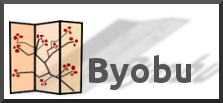It allows for the execution of multiple shells in one terminal. Byobu now includes an enhanced profiles, convenient keybindings, configuration utilities, and toggle-able system status notifications.
Invoke it simply with:
byobu
Now bring up the configuration menu. By default this is done by pressing the F9 key. This will allow you to:
-
View the Help menu
-
Change Byobu’s background color
-
Change Byobu’s foreground color
-
Toggle status notifications
-
Change the key binding set
-
Change the escape sequence
-
Create new windows
-
Manage the default windows
-
Byobu currently does not launch at login (toggle on)
The key bindings determine such things as the escape sequence, new window, change window, etc. There are two key binding sets to choose from f-keys and screen-escape-keys. If you wish to use the original key bindings choose the none set.
byobu provides a menu which displays the Ubuntu release, processor information, memory information, and the time and date. The effect is similar to a desktop menu.
Using the “Byobu currently does not launch at login (toggle on)” option will cause byobu to be executed any time a terminal is opened. Changes made to byobu are on a per user basis, and will not affect other users on the system.
One difference when using byobu is the scrollback mode. Press the F7 key to enter scrollback mode. Scrollback mode allows you to navigate past output using vi like commands. Here is a quick list of movement commands:
-
h – Move the cursor left by one character
-
j – Move the cursor down by one line
-
k – Move the cursor up by one line
-
l – Move the cursor right by one character
-
0 – Move to the beginning of the current line
-
$ – Move to the end of the current line
-
G – Moves to the specified line (defaults to the end of the buffer)
-
/ – Search forward
-
? – Search backward
-
n – Moves to the next match, either forward or backward
